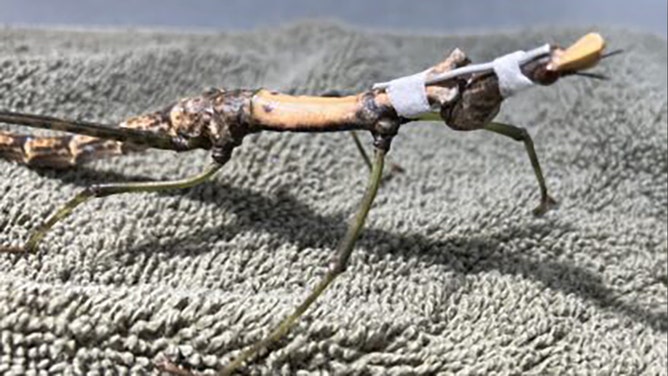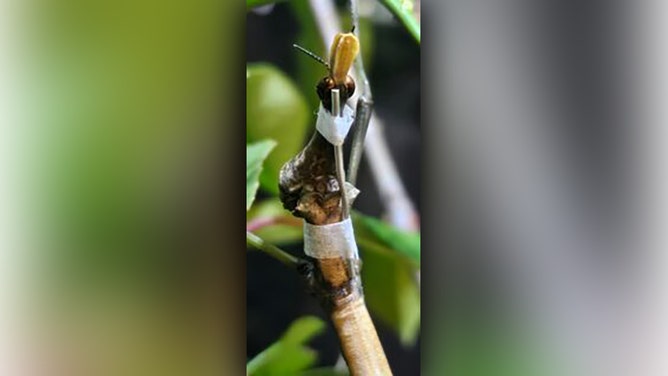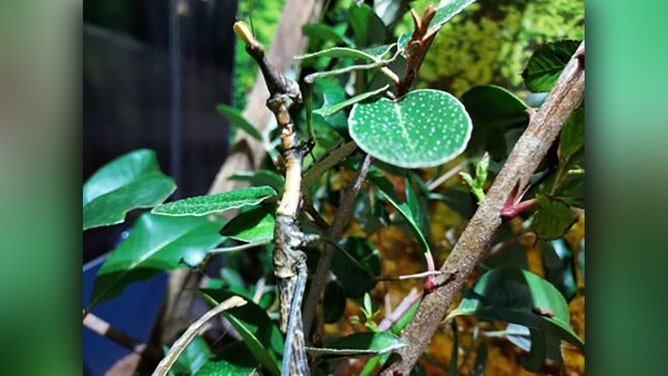Miniature 'neck' brace helps save grasshopper at Texas zoo
Veterinarians managed to create the flexible neck brace using a sterile Q-tip shaft and microspore tape to secure it.
FILE – Playful zoo animals frolic in the snow in winter wonderlands across the country
Giant pandas, lions and elephants are just some of the zoo animals captured on camera enjoying the winter weather.
HOUSTON – Thanks to an ingenious temporary neck brace design, one of the smallest critters at the Houston Zoo is now feeling better.
A stick-like grasshopper, known as a Peruvian jumping stick, recently shed its exoskeleton, which usually happens around 6 months of age, according to zoo officials.
After molting, the insect had a weakened area around part of its body resembling a "neck." According to a recent zoo blog post, this was caused by a crease in her thoracic region.
"Since these grasshoppers spend most of their time climbing and being up in tree branches, it was essential to keep her head level as the crease on her ‘neck’ was causing her head to flop all the way back due its weight when she climbed upwards," the zoo added.
Zookeepers said they developed a miniature neck brace to temporarily support the insect's neck in a neutral position while its exoskeleton hardened.
'STRANGE' CREATURE THOUGHT TO BE EXTINCT FOUND IN REMOTE RAINFOREST

A Peruvian jumping stick recently shed its exoskeleton but had a weakened area around an area resembling its "neck."
(Houston Zoo)
Veterinarians created the flexible neck brace using a sterile Q-tip shaft and microspore tape to secure it.

A special neck brace was designed for the insect using a clean cotton swab handle and gentle adhesive tape to hold it in place.
(Houston Zoo)
A few days later, when the neck brace was removed, the insect could hold her head up on her own, according to the zoo. Although there is a small visible mark from the initial injury, she was able to climb and move around her exhibit just like before.
BIBLICAL PLAGUE-OF-LOCUSTS THREAT LINKED TO WEATHER, CLIMATE EXTREMES

The insect was able to support her head after a few uses of the neck brace.
(Houston Zoo)
"Whether it’s a mammal, reptile, bird, or even insect, all of our animals receive extraordinary care from our veterinary team, no matter how big or small it may be," the zoo said.
